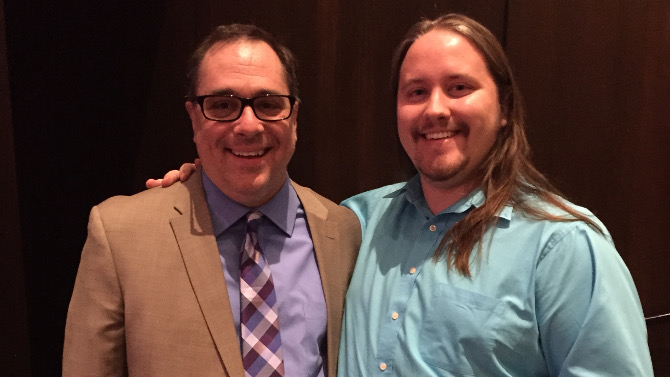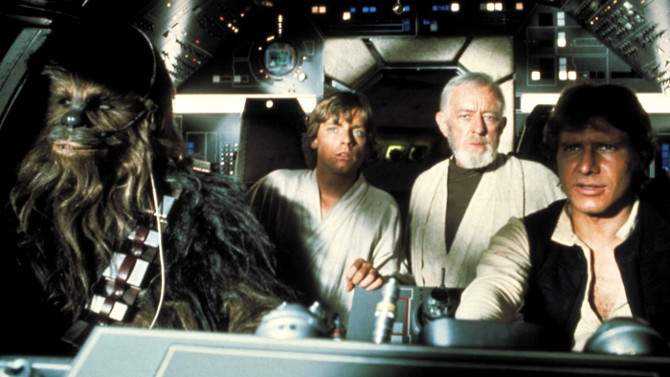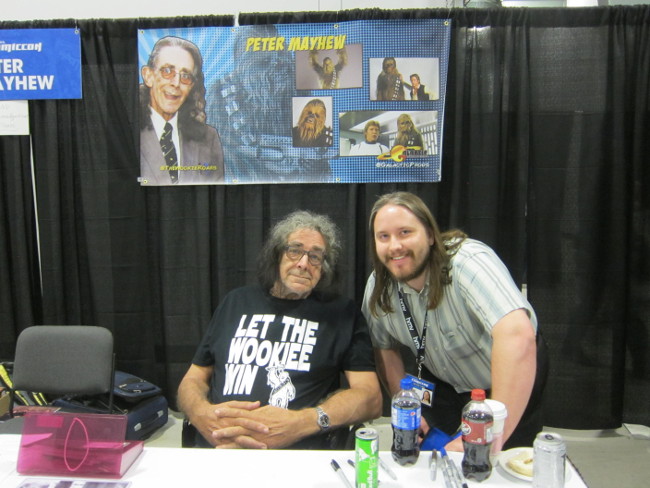Star Wars is the talk of the town once again. Episode 7, entitled The Force Awakens is sweeping the box office by storm. So, perhaps it is wise to return to the year 1977 to look at the first film: A New Hope.
This review also consists of a Star Pick. Joe Kraemer, composer of the blockbuster films Jack Reacher and Mission: Impossible – Rogue Nation, spoke at the St. Lawrence International Film Festival about the role music plays in movies as well as his process in writing for films such as the two mentioned above. Following his presentation, he spoke to me about some of his influences. One of his favourites is the original Star Wars, which he describes as a film that transfixed him as a child (or as he put it “melted his brain”) – describing it as “the whole package”. Look for a second Star Pick featuring Joe Kraemer in the coming weeks and also check out the video interview down below.
For those of you who have been living under a rock for the past thirty-eight years, the story begins with the title ‘Star Wars’ plastered on the screen, followed by the iconic crawling story introduction (with John Williams’ powerful score soaring in the background). We, the audience, are thrown into a civil war in which Rebel forces have stolen secret plans on the Death Star, the evil Galactic Empire’s powerful planet-like weapon. Princess Leia (Carrie Fisher), their leader, who is carrying the plans, is kidnapped by forces under the command of Darth Vader (acted by David Prowse and voiced by James Earl Jones). Before she is captured, she hides the plans in droid R2-D2, who escapes along with fellow droid C-3PO.
They are nabbed by traders and are eventually sold to a couple and their young nephew, Luke Skywalker (Mark Hamill). Skywalker accidentally triggers the message stored by Leia who requests the help of Obi-Wan Kenobi (Alec Guinness). Skywalker finds the reclusive man who reveals that he and his father were actually Jedi knights.
Originally declining to learn the ‘Force’ from Obi-Wan, he returns home to find that the evil Stormtroopers have killed his aunt and uncle – which leads him to take up the offer. The two men, along with the droids, track down Han Solo (Harrison Ford) and his Wookiee compadre Chewbacca (Peter Mayhew) in a shady bar (one of the scenes that always sticks with people).
As you probably already know, Han’s ship, the Millennium Falcon, is caught by the Death Star’s tractor beam. When in the ship, Obi-Wan disables the tractor beam while Luke, Han and Chewbacca rescue Leia. Obi-Wan is struck down by Darth Vader, but the rest are able to escape.
The climax of the film involves the iconic space battle, in which the Rebel fighters attempt to destroy the Death Star by way of its only weakness, an exhaust port that links to the ship’s main reactor. Good victories over evil (that is until the Empire Strikes Back in the next film).
Star Wars quickly became one of the most iconic films of all-time – surprising writer/director George Lucas, as well as many of his friends, including Brian De Palma. Soon, studios were clambering to make some money off of the huge craze. Former movies that related to space, such as the 1968 film Barbarella, were re-released in 1977 or soon after to capitalize on the trend. Likewise, even more grounded action characters like James Bond were making their way into space in the 1979 motion picture Moonraker. In 1987, spoof-master Mel Brooks turned his funny bone towards the space saga, creating the classic comedy Spaceballs. May the schwartz be with you, as he would say. These are just a few of the ways in which Star Wars has influenced the film industry.
John Williams’ score has also been given just as much acclaim – often being called the greatest film composition of all-time. His grand sweeping symphonic score is able to cleverly capture themes of good vs. evil as well as light vs. dark by using leitmotifs (a musical phrase that exemplifies a character, location, plot element, relationship, idea or mood). Unlike other franchises, he has been able to write the music for each and every one of the Star Wars films. Williams, at the age of 83, continues to write memorable scores to motion pictures.
George Lucas’ Star Wars is, simply put, one of the great films of all-time. It captures the eternal struggle of light vs. dark packaged in a space saga that has managed to captivate the imaginations of youth and adults alike for nearly the last four decades. With its sweeping score, stunning visuals, memorable cast of characters, excellent acting and creative premise, it is well worth another visit to a galaxy far, far away. So, join the force of Star Wars fanatics and re-watch this imaginative tale.



